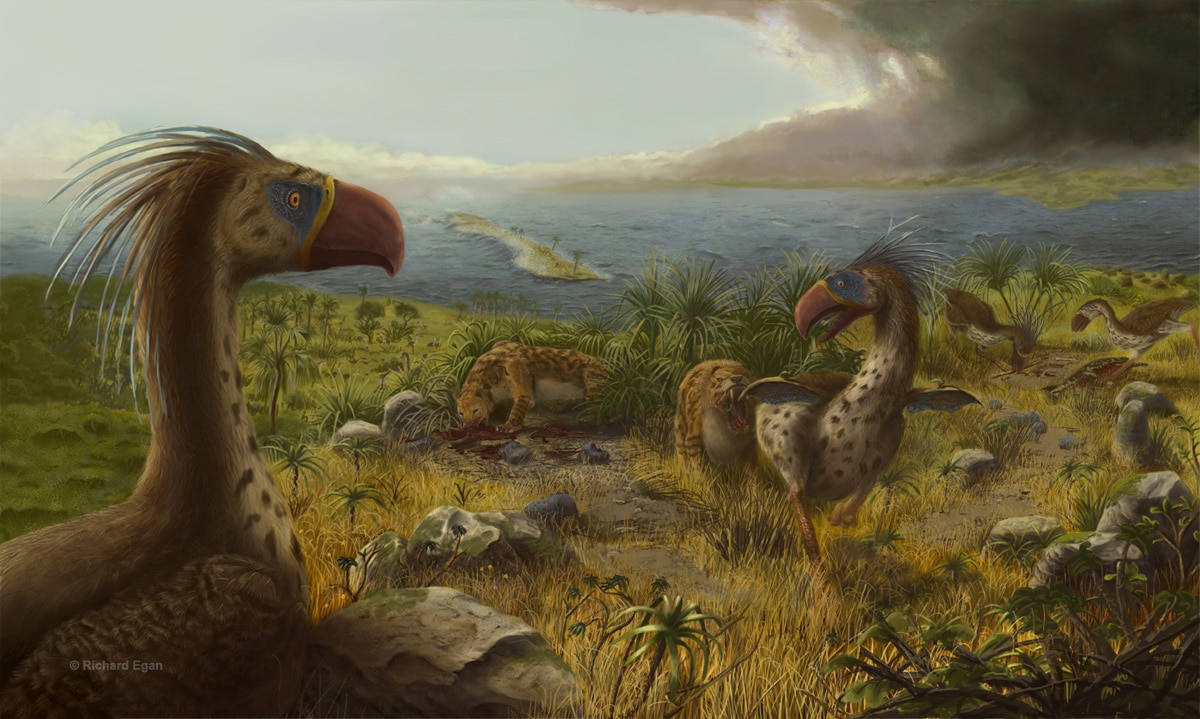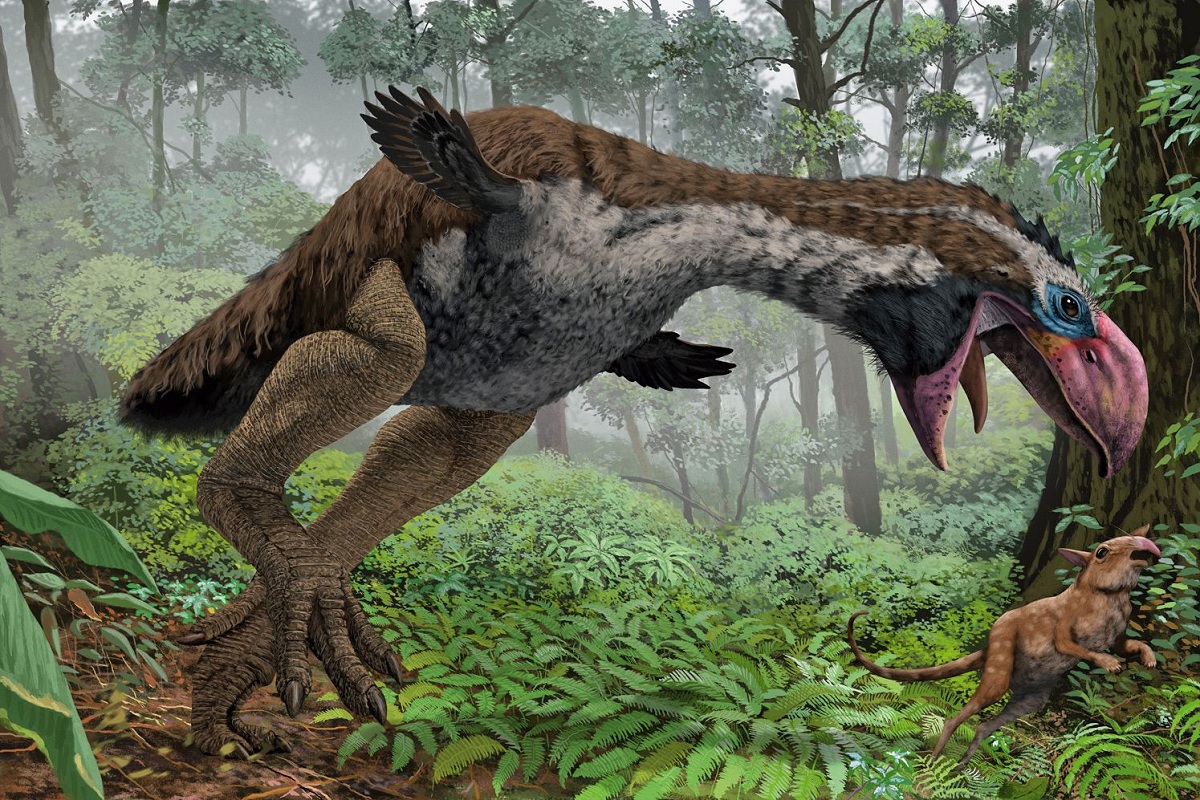
La Eocene epoch was one of those that formed the Paleogene period of the Cenozoic era. During this time there were great changes from the geological and biological point of view, since great mountain ranges were formed due to continental collisions. These movements of the continents caused the Eocene fauna it could be developed and diversified in wide ranges.
In this article we are going to tell you about all the characteristics and development of the Eocene fauna.
Key features

The Eocene epoch it lasted approximately 23 million years. It was distributed in 4 ages marked by some climatic, geological and faunal changes. It is considered a time of changes in which the planet underwent some modifications at a geological level since the super continent Pangea was caused to break. This is how the continents were formed as we know them today.
There were numerous climatic changes of great importance since there were some events opposed to the Paleogene. For example, we have the Azolla event that caused an increase in the global environmental temperature in such a way that it created other conditions in which living beings had to adapt. There was also another change in temperature fluctuations that triggered a decrease in it. Both climatic events brought consequences for the living beings that populated the planet during this time.
Birds were one of the groups that experienced the greatest diversification at this time. Many of those that inhabited the planet were fearsome and large predators. The total fragmentation of the super continent Pangea was what caused or the diversification of many species of animals and plants.
We are going to analyze how both the flora and fauna of the Eocene have evolved.
Flora

During this period of time the environmental conditions of this planet allowed the development of numerous species of plants and animals. It was a time when biodiversity abounded thanks to the humid and warm climate.
Analyzing the flora we found that it was a quite noticeable change. When temperatures were warm and humid at the beginning of the Eocene, the planet had an abundance of jungles and forests. There is evidence that says that the poles also had forest during this time. The united thing that maintained little plant scarcity were the desert ecosystems in the interior of the continents.
The plants that developed the most during this time were the metasequoia and the cupresaceae family. The latter are those that belong to the group of gymnosperms, being basically conifers. It is a fairly versatile group of plants as they can be both small and large. Its leaves are similar to scales and are arranged very close to each other. Some of them release something more pleasant.
Eocene fauna

It is here that we focus on the fauna of the Eocene. We can say that the fauna at this time was widely diversified. The groups of mammals and birds were the ones that stood out the most. We are going to analyze all the groups.
invertebrates
It kept diversifying quite especially in the marine environment. There are a large number of mollusks, among which the gastropods, bivalves, echinoderms and cnidarians stand out. Arthropods also evolved during this time, with ants being the most representative.
Birds
Birds were those species that developed the most thanks to favorable environmental conditions. Some species were fierce predators gave two groups of living beings and were very feared at that time. Among the bird species that developed the most and were most abundant are: Phorusrhacidae, Gastornis and the penguins. We are going to describe the characteristics of each of them:
- Phorusrhacidae: It is a group of birds whose main characteristic is its large size. Some specimens were up to 3 meters high. It can be verified thanks to the numerous fossil records that exist from this time. Recently, some skulls of these animals could be found in order to better identify them. Another feature of the wing is the ability to fly. However, he made up for it very quickly. It is thought that they reached speeds of up to 50 kilometers per hour. They were agile predators of small animals, including some mammals.
- Gastornis: it is known as the bird of terror. This is because they looked quite intimidating. Among its most notable characteristics we find its large size, with some specimens up to 2 meters and more than 100 kilos in weight. Their large head and short, robust body made them quite fearsome. The beak was similar to what parrots have today. The aesthetic strength was impressive and served to capture their prey. Although it did not fly, it had great speed.
- Penguins: It is a group of non-flying bass. This group has survived to the present day and is located in Antarctica at the south pole. At this time it is believed that they inhabited the South American continent. This is known thanks to some fossils that have been recovered from that site. There were some specimens that measured up to 1.5 as well as other smaller ones.
Eocene Fauna: Reptiles and Mammals
Reptiles existed and developed apace. The ones that existed the most were large snakes, reaching more than 10 meters in length in some specimens.
As for mammals, this group became more and more diversified, especially ungulates, cetaceans and some large carnivores. Let's analyze each one of them:
- Ungulates: Its main characteristic is that it can move supported on the end of its fingers. Here we have pigs and camels, cows, sheep and goats.
- Cetaceans: they developed in the marine environment and there were species such as archaeocetos. These were the first to develop characteristics that allowed them to adapt to aquatic life.
- Ambulocytids: they are the first existing whales on this planet. They have a length of more than 3 meters and their weight could be around 120 kg. It has a similar appearance to crocodiles although with longer limbs. These limbs served as fins to move around. Their diet was carnivorous.
I hope that with this information you can learn more about the Eocene fauna.